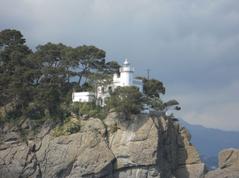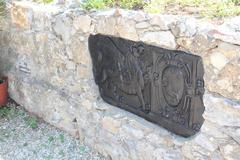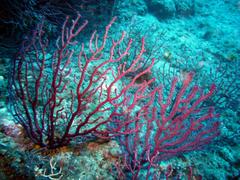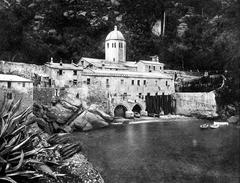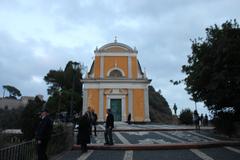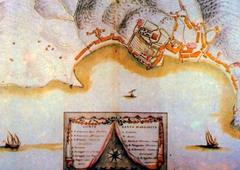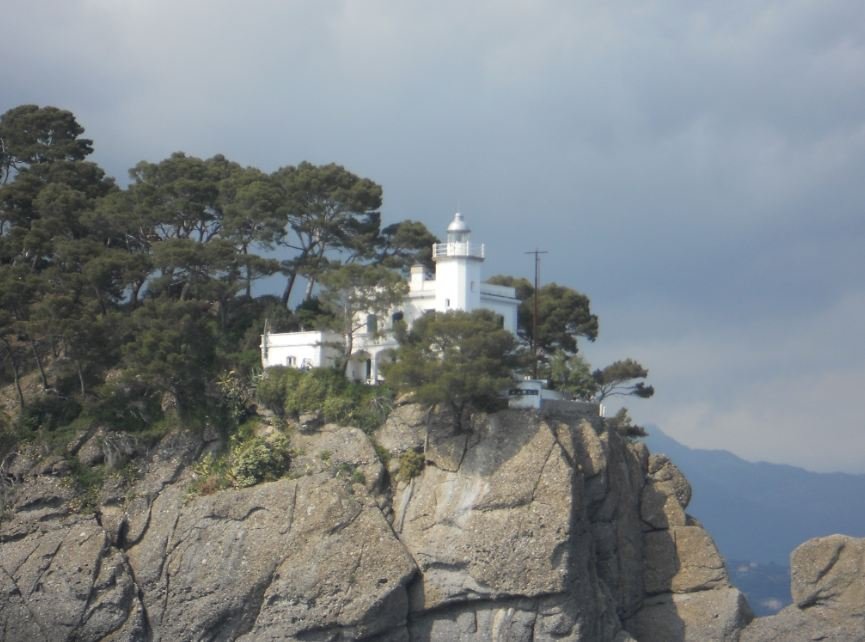
Faro di Portofino Visiting Hours, Tickets, and Travel Tips in Rapallo, Italy
Date: 18/07/2024
Introduction
Welcome to the ultimate guide to visiting Faro di Portofino, a historic lighthouse located in the picturesque village of Portofino, Rapallo, Italy. This guide aims to provide comprehensive information about this iconic landmark’s rich history, cultural significance, and practical visitor details. Faro di Portofino, constructed in the 19th century, serves as both a beacon for maritime navigation and a symbol of the region’s timeless beauty. Its strategic location on the promontory of Portofino offers panoramic views of the Ligurian Sea, making it a must-visit destination for travelers. Whether you are a history enthusiast, nature lover, or simply seeking a serene spot, Faro di Portofino has something to offer everyone (Liguria Heritage, Italian Maritime History).
Table of Contents
- Introduction
- History of Faro di Portofino
- Cultural Significance
- Environmental Significance
- Visitor Information
- Hiking to the Lighthouse
- Nearby Attractions
- Safety Tips
- Accessibility
- Local Customs and Etiquette
- Photography Tips
- Dining Options
- Souvenirs and Shopping
- Environmental Responsibility
- FAQ
- Conclusion
History of Faro di Portofino
Origins and Early History
The Faro di Portofino was constructed in the 19th century, with its exact year of construction often cited as 1870. This period was marked by the expansion of maritime navigation aids along the Italian coastline, enhancing coastal safety for burgeoning maritime trade (Liguria Heritage).
Strategic Importance
Portofino’s strategic location on the Italian Riviera made it crucial for maritime navigation. The lighthouse was built to guide ships safely through the Ligurian Sea, particularly during the night and adverse weather conditions. Its light served as a beacon for sailors navigating the Mediterranean’s treacherous waters, part of a broader initiative by the Italian government to modernize and secure maritime routes (Italian Maritime History).
Architectural Design
The Faro di Portofino features a cylindrical stone tower with a lantern and gallery, rising from a square base. Painted white, the tower contrasts beautifully with the surrounding greenery and blue sea. The lighthouse stands approximately 12 meters tall, and its light has a range of about 16 nautical miles (Portofino Lighthouse Architecture).
World War II and Post-War Period
During World War II, the Faro di Portofino played a crucial role in coastal defense. Fortified by the Italian military, it protected against potential Allied invasions. After the war, it continued to aid maritime navigation and became a symbol of resilience and recovery for the local community (WWII Coastal Defenses).
Modernization and Technological Advances
In the latter half of the 20th century, the lighthouse underwent several modernization efforts, including the automation of the light system and the installation of solar panels. These updates improved its reliability and efficiency, reflecting broader environmental trends in lighthouse management (Modern Lighthouse Technology).
Cultural Significance
The Faro di Portofino is a cultural icon, featured in numerous works of art, literature, and film. It symbolizes the timeless beauty and allure of the Italian Riviera and is a popular subject for photographers and painters. The lighthouse also attracts tourists who enjoy panoramic views of the Ligurian Sea and the surrounding landscape (Cultural Significance of Portofino).
Environmental Significance
The area surrounding Faro di Portofino is part of the Portofino Marine Protected Area, established to preserve the unique marine and terrestrial ecosystems of the region. The lighthouse stands as a guardian of this natural sanctuary, highlighting the importance of conservation efforts. The marine protected area is home to a variety of species, including the endangered Mediterranean monk seal and numerous types of coral and fish.
Visitor Information
Visiting Hours
Faro di Portofino is generally open to visitors from 9 AM to 6 PM. However, hours may vary, so it’s advisable to check the official website or local information sources before planning your visit.
Tickets
Entry to the lighthouse is typically free, but guided tours may have a fee. For the latest ticket prices and availability, visit the official Portofino tourism website.
Travel Tips
The lighthouse can be accessed via a scenic walking trail from the village of Portofino. Wear comfortable shoes and bring water, especially during the summer months.
Hiking to the Lighthouse
One of the most rewarding ways to reach Faro di Portofino is by hiking. The trail starts from the center of Portofino and winds through the Portofino Regional Park. The hike is moderately challenging and takes about 45 minutes to an hour. Along the way, hikers can enjoy stunning views of the Mediterranean Sea and the lush landscape.
Nearby Attractions
While visiting the Faro di Portofino, consider exploring other historical sites in Portofino, such as the Church of San Giorgio and Castello Brown. These landmarks offer additional insights into the region’s rich history and stunning views of the Ligurian coast.
Safety Tips
- Stay on marked trails: The trails in the Portofino Regional Park are well-marked. Straying off the path can be dangerous due to the rugged terrain.
- Check weather conditions: Before setting out, check the weather forecast. The trail can be slippery and hazardous in wet conditions.
- Travel in groups: If possible, hike with a group or inform someone of your plans. Mobile phone reception can be unreliable in some areas.
Accessibility
While the hike to Faro di Portofino is a popular option, it may not be suitable for everyone. For those with mobility issues, the lighthouse can be accessed by a shorter, less strenuous path from the nearby parking area. However, the path is still uneven and may require assistance.
Local Customs and Etiquette
- Respect nature: The Portofino Regional Park is a protected area. Visitors are expected to respect the natural environment by not littering and staying on designated paths.
- Dress modestly: While casual attire is acceptable, it is advisable to dress modestly, especially when visiting religious sites like the Church of San Giorgio.
- Language: Italian is the primary language spoken in Portofino. While many locals speak English, learning a few basic Italian phrases can enhance your experience.
Photography Tips
- Golden Hour: The best time for photography is during the golden hour, shortly after sunrise or before sunset. The soft light enhances the natural beauty of the landscape.
- Wide-Angle Lens: A wide-angle lens is ideal for capturing the expansive views from the lighthouse.
- Tripod: For steady shots, especially in low light conditions, a tripod is recommended.
Dining Options
- La Terrazza: Located near the lighthouse, this restaurant offers a variety of Italian dishes with a focus on seafood. The terrace provides stunning views of the sea (La Terrazza).
- Ristorante Puny: Situated in the heart of Portofino, this restaurant is known for its traditional Ligurian cuisine. Reservations are recommended, especially during peak season (Ristorante Puny).
Souvenirs and Shopping
Portofino offers a range of shopping options, from high-end boutiques to local artisan shops. Popular souvenirs include:
- Ligurian Olive Oil: Known for its high quality, Ligurian olive oil makes a great gift.
- Handmade Ceramics: Local artisans produce beautiful ceramics that reflect the region’s culture and history.
- Limoncello: This traditional Italian lemon liqueur is a popular souvenir.
Environmental Responsibility
Visitors are encouraged to practice sustainable tourism by:
- Reducing Waste: Use reusable water bottles and bags to minimize plastic waste.
- Supporting Local Businesses: Choose locally-owned restaurants and shops to support the local economy.
- Respecting Wildlife: Do not disturb the local wildlife and adhere to guidelines set by the Portofino Marine Protected Area.
FAQ
- What are the visiting hours for Faro di Portofino? The lighthouse is generally open from 9 AM to 6 PM, but it’s best to check the official website for the most current information.
- Is there an entry fee? Entry is usually free, but guided tours may require a fee.
- How can I reach the lighthouse? The Faro di Portofino is accessible via a scenic walking trail from the village of Portofino.
Conclusion
Faro di Portofino stands as a testament to the rich maritime history and cultural heritage of the Italian Riviera. Its enduring presence continues to guide sailors and captivate visitors, making it a cherished landmark in the region. Through ongoing preservation efforts and modern technological advancements, the lighthouse remains a vital part of Portofino’s identity and a beacon of its historical legacy. Don’t miss out on this incredible experience—visit the Faro di Portofino and immerse yourself in its history and beauty. (Portofino Lighthouse Architecture, WWII Coastal Defenses, Modern Lighthouse Technology, Cultural Significance of Portofino, Lighthouse Preservation)
References
- Liguria Heritage. (n.d.). Liguria Heritage
- Italian Maritime History. (n.d.). Italian Maritime History
- Portofino Lighthouse Architecture. (n.d.). Portofino Lighthouse Architecture
- WWII Coastal Defenses. (n.d.). WWII Coastal Defenses
- Modern Lighthouse Technology. (n.d.). Modern Lighthouse Technology
- Cultural Significance of Portofino. (n.d.). Cultural Significance of Portofino
- Lighthouse Preservation. (n.d.). Lighthouse Preservation
